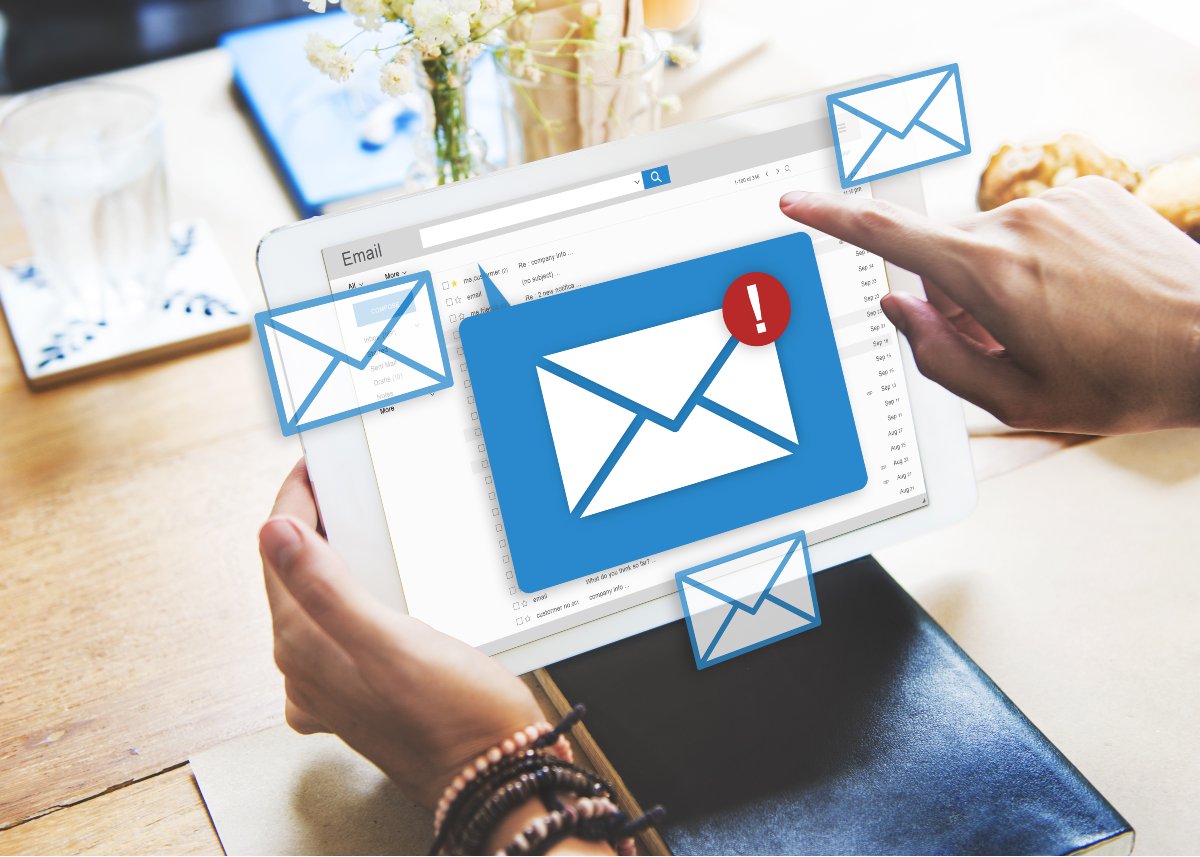All marketing and advertising strategies require building a strong relationship with clients. However, this is becoming more difficult for marketers as consumer expectations are increasing. In 2019, 56% of U.S. consumers stated that they had higher customer service expectations compared to the previous year.
As a result, to maintain a positive client experience, marketers must develop a professional email strategy. Email marketing is more than reaching out to consumers to increase traffic; it also includes retaining customers by sending out “Thank you for replying” emails.
Read on for best practices you can utilize in your consumer outreach programs and “thank you for your email” examples.
Be Careful with Names, Titles, and Pronouns
When manually writing “Thank you for your reply” emails, it is best to defer to the consumer’s sign-off. If the individual uses a proper title, then you may opt to include it in your greeting. However, if they do not, it is best to stick to a first and last-name greeting.

Similarly, if you will be using automated email or SMS marketing campaigns, you’d likely want to address consumers by first and last name rather than a title. This can ultimately save you from unintentionally referring to the customer by the incorrect title or implying the wrong gender. Using the individual’s first and last name also personalizes the message, adding sincerity and improving customer service expectations.
Use a Professional Tone
Rather than emailing the consumer by saying, “Thanks for getting back to me,” it is better to use a professional tone. That said, you don’t need to adopt an overly formal voice. Nevertheless, try to be polite, personable, and neutral in your response. If you’re looking for some guidance, we have some example emails later in the blog.
Use the Right Format
When sending out “Thank you for your reply” emails, it is important to use the correct formatting to ensure you convey the most important information upfront. Typically, consumers will only skim the first few sentences of the email. As a result, you want to make sure that all pertinent information is expressed to them in the opening.
You’ll likely begin with a short sentence thanking them for the response. Then you may follow up with some info regarding any next steps. Finally, you’ll want to end the opening paragraph by stating how the consumer can reach you should they need more assistance.
Be Clear and Brief
Many of us are inundated with hundreds of emails a week. As a result, we often stop fully reading them and opt to skim for the most important information. Studies show that people spend an average of 10 seconds reading an email. Taking this into account, you must ensure that your emails are clear, concise, and to the point.

When sending a “Thank you for your reply” email, make sure all contact information and next step content are at the top in the first few sentences. Additionally, use shorter sentences and be as specific as possible.
For example, if you need to schedule a meeting with the consumer, state that information immediately after thanking them for their response. Additionally, include specific days and times that you might be available to schedule a call.
Be Genuine
One of the main ways to increase customer service and satisfaction is to personalize emails and be genuine when responding. Consumers want to feel that they are interacting with a real person, despite the conversation being virtual. As a result, avoid using dry business language. Instead, you can opt for a more conversational approach that aims to provide the client with helpful information.
Avoid Providing More Information Than Necessary
With busy schedules, consumers don’t want to spend time sifting through unnecessary information in emails. Therefore, it is best to avoid sales or marketing-oriented copy when sending “Thank you for your reply” emails.
As mentioned previously, keep the content simple and to the point. Only include information that is relevant to the consumer’s inquiries or the next steps of the sign-up, onboarding, or demo process.
Avoid These Common Mistakes
Writing a “Thank you for your reply” email sounds simple enough, but many marketers fall victim to these common mistakes. Here are some errors you should avoid when reaching out to consumers:
Too Many Graphics and Links
Including too many images and embedded links may detract from the email’s message, making it sound too much like a marketing campaign. Additionally, large images can make it difficult to navigate the email, causing the client to miss out on important information. As a result, avoid including too many unnecessary graphics or external links to the company website.

Nevertheless, it is still a good idea to include your company’s logo to maintain your brand so the consumer can recognize who the correspondence is from.
Poor Subject Lines
Customers spend even less time reading email subject lines than they do the actual body. As a result, you want to avoid subject lines that sound salesy or gimmicky. Instead, keep the subject simple and make sure to convey to the reader that it is a response to their email.
Some subject lines may include:
- “Thank you for your response to [company name]”
- “Thanks for reaching out to [company name]”
- “[company name] has received your inquiry”
- “[company name] appreciates your response”
Improve Message Previews
Another way to ensure your email doesn’t go unread is to improve message previews that are presented to recipients. Typically, consumers will avoid or automatically delete messages that look like sales emails, regarding them as spam. With concise message previews, they may recognize that it is not junk mail but rather a message with pertinent information.
Mobile Optimization
More than 81% of emails are viewed on mobile devices. Failing to optimize your “Thank you for your response” email formatting to accommodate mobile users can cause your consumers to be dissatisfied. Therefore, make sure to design the layout in a way that can be tailored to mobile devices, and make sure to test your emails for mobile formatting before sending them out.

Contact Information
The most important mistake you want to avoid is failing to provide contact information or giving out incorrect info. Make sure your sign-off info is up to date and that all the links function properly. You always want to offer the consumer a way to reach out to you should they have any other inquiries.
Misspellings
A “Thank you for your reply” email loses its professionalism when it is filled with errors and misspellings. Therefore, always double-check your message before sending it out to avoid coming across as sloppy and unpolished. Many word processors automatically offer spelling and grammar corrections. However, if you want to go the extra step, you can utilize Grammarly, which provides more in-depth suggestions and fixes.
How Fast to Reply
Prompt responses are another way to increase customer satisfaction and exceed expectations. With so many customer-business interactions taking place over the internet, many consumers have come to expect responses in 24 hours or less. As a result, this is typically the standard you should aim for when sending thank-you emails.

If you are utilizing automated responders, response times will usually be much quicker than 24 hours. However, writing manual emails or responding to specific inquiries may reasonably take between 24 to 48 hours. If you’re penning your “Thank you for your response” emails yourself, it might be beneficial to invest in an autoresponder that lets consumers know you will be reaching out to them within a few days.
Rather than having clients wait to see whether their email was received, it is better to proactively notify them that their inquiry has been acknowledged and will be personally responded to in 24 to 48 hours.
Example Emails
Now you can craft your own “Thank you for replying” emails with our tips. However, if you need some templates, we have examples below:
Thank You for Your Reply
Dear [First Name Last Name],
Thank you for your response to my recent email. I appreciate you taking the time to [the action that the consumer took].
I look forward to continuing our relationship together. Please feel free to reach me at any time at [contact information].
Best,
[Your Name]
Thank You for Your Inquiry
Dear [First Name Last Name],
I am reaching out to let you know that we received your inquiry email. We are eager to get back to you as quickly as possible. We will take a closer look into the matter and respond within 24 to 48 hours.
Should you have any other questions, please feel free to reach a representative at [contact information].
Thank you for your patience,
[Your Name]
Thank You for Your Quick Response
Dear [First Name Last Name],
Thank you so much for your prompt response. I am eager to get the ball rolling on this project and look forward to working with you. To initiate the next steps, please [include the next steps the consumer needs to take].
If you would like to schedule a call to discuss these in more depth, I am available [state days and times]. Please let me know when would be most convenient for you.
In the meantime, feel free to reach me at [contact information] with any additional inquiries.
Sincerely,
[Your Name]
Final Thoughts
“Thank you for your reply” emails are the cornerstone of excellent customer service initiatives. Many consumers have come to expect them promptly. Therefore, it is important for marketers to utilize automated and personalized “thank you for your response” emails. Remember to keep it concise, professional, and genuine. These emails are a great way to foster positive customer relationships and exceed expectations.


